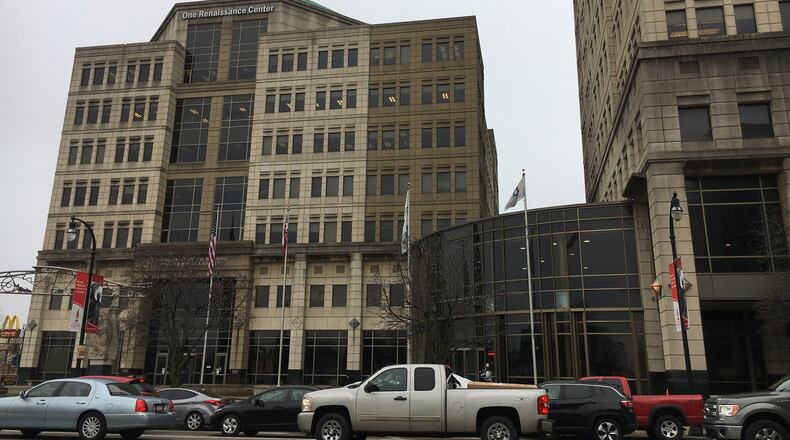Also, Patterson told council, “Just seems like we’re dumping a lot of money into a private enterprise, and that concerns a lot of citizens. And, you know, I don’t know all the ins and outs, and the workings of this. Nobody does, because it’s never been really explained, that an average Joe can understand.”
Hamilton City Council held its first of two considerations Wednesday of legislation that would allow the sale of the city building, which was dedicated in 2000, to the Hamilton Community Authority. Council is expected to vote Feb. 27.
The authority is an entity the city created in 2017 that is evolving to be able to own the city building and use $1.4 million in annual rent payments from city government as revenue to borrow against to help the city give financial help to the proposed Spooky Nook at Champion Mill gigantic indoor sports complex.
That is the financial help Hamilton in October promised to the project, the evening before the groundbreaking at the former Champion Paper mill on North B St., which the sports complex and its convention center are to occupy.
Greg Daniels of the law firm Squire Patton Boggs during the council session and a meeting of the community authority on Thursday outlined changes that are happening with the organization.
New community authorities were allowed under Ohio legislation first created during the early 1970s, and exist to help “very complicated development projects,” such as the transformation of the paper mill to a state-of-the-art sports fitness, training and team-competition facility, accompanied by recreation possibilities and the convention center.
FROM OUR 2017 PENNSYLVANIA VISIT: Spooky Nook built a giant sports complex, and the people have come
Such community authorities can own and maintain property and can levy community-development fees that can be used to fund infrastructure improvements. They also can issue tax-exempt bonds, which allow lower-interest-rate bonds to be issued to fund such projects, Daniels said.
In 2017, Hamilton created the community authority, whose original jurisdiction was the former Champion Mill site, which has a seven-member board, three of them representing Spooky Nook developers (there is one developer vacancy currently).
That jurisdiction is expanding the authority’s mission to include the ownership of the city building. The authority at coming meetings is expected to approve parts of the Champion redevelopment, including buying properties for parking.
“Once the project’s built, some of the property that will be owned and managed by the community authority includes the parking fields in and around that,” Daniels said.
Gary Sheets, a former city law director, told council he believed that since Hamilton’s utilities contributed significant funds through the year to pay for 345 High St., those utilities should be refunded for those payments so their ratepayers are made whole.
“When this building is sold, if it can be sold, the portions that were contributed by the utilities should be reimbursed to the utilities,” Sheets argued. Through the years, Hamilton’s utilities paid 80 percent of the building’s “mortgage,” with each of four (gas, electric, water and sewers) paying 20 percent, and the city’s general fund paying the remaining 20 percent.
But afterward, Daniels said his firm had researched the matter and found, “the city has to use it for permanent improvements,” so it cannot be used for utility operating expenses, or filling potholes, because those are not permanent improvements that last more than five years.
On the other hand, “They could use it for permanent improvements for utilities,” he said. “They cannot transfer it to a utility capital fund. So if the utility said, ‘Hey, I need this permanent improvement,’ it’s not a transfer to the utility funds. It’s city council saying, ‘Yes, I will build this for you, utility.’”
With the proposed payments of $1.4 million per year to the authority — the same amount now paid on the building’s debt — utilities will pay the same ratio they have paid in the past.
Resident Dan Acton after the authority met Thursday complained to its members that its meeting allowed no place for public comment. He made his remarks after the meeting was closed.
“For public comment to be prohibited I believe is just not in keeping with transparency,” Acton said. “There are a number of questions that are outstanding.”
About the Author
